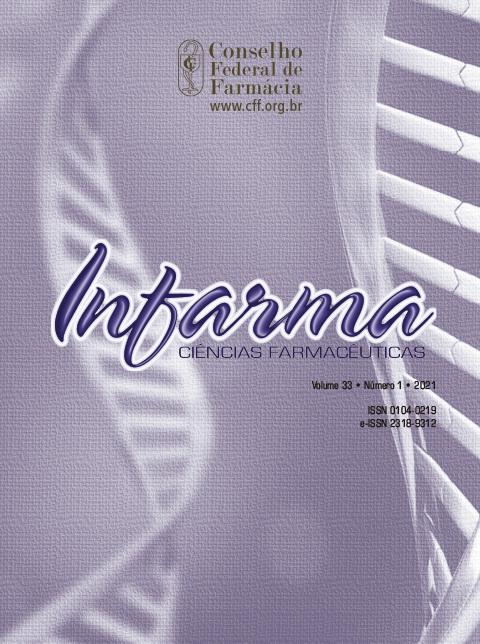EVALUATION OF DRUG-RELATED PROBLEMS IN POLYMEDICATED PATIENTS
DOI:
https://doi.org/10.14450/2318-9312.v33.e1.a2021.pp67-74Keywords:
pharmaceutical assistance, polymedication, health worker-patient relations, pharmacological treatment.Abstract
Although the objective is to improve the quality of life, polymedication is directly associated with the increased likelihood that the patient will develop drug-related problems (DRP), thus compromising the treatment’s effectiveness, besides generating risks for the treatment and health. Thus, the present study performed pharmacotherapeutic follow-up in polymedicated patients from a community pharmacy service. The present study aimed to carry out pharmacotherapeutic follow-up in polymedicated patients using a community pharmacy service through a prospective and quantitative study in a pharmacy school at Campo Mourão, PR, Brazil. Twenty-six patients with chronic diseases and being treated with five or more medications were included in the study. The pharmacotherapeutic follow-up was performed based on the methodology proposed by the Dáder method. Drugdex®, Dynamed, and ANVISA’s electronic files were used to evaluate the therapy. DRP were classified according to Rovers and Currie, and the Beers criteria were used to identify inappropriate drugs for the elderly. Most patients were elderly (80.8%), with three or more diseases and on average use of eight medications. 108 DRP (mean: 4.9 DRP/patient) were observed, which resulted in 76 proposals for pharmaceutical interventions to patients. Among the identified DRP, those related to safety (40.7%), effectiveness (35.2%), and adverse reactions (27.8%) were highlighted. Among the factors that can be pointed out as predisposing to the high incidence of PRM, polymedication, advanced age and the presence of chronic diseases stand out.
Downloads
Published
How to Cite
Issue
Section
License
Authors who publish in this journal agree to the following terms:
- Authors retain the copyright and grant the journal the right of first publication, with the work simultaneously licensed under the Licença Creative Commons Attribution which allows the sharing of work with acknowledgment of authorship and initial publication in this journal.
- Authors are authorized to take additional contracts separately, for non-exclusive distribution of the version of the work published in this journal (e.g. publish in institutional repository or as a book chapter), with acknowledgment of authorship and initial publication in this journal.
- Authors are allowed and encouraged to publish and distribute their work online (e.g. in institutional repositories or on their personal page) at any point before or during the editorial process, as this can generate productive changes as well as increase the impact and Citation of published work (See O Efeito do Acesso Livre ).


